This article was co-authored by Luigi Oppido. Luigi Oppido is the Owner and Operator of Pleasure Point Computers in Santa Cruz, California. Luigi has over 25 years of experience in general computer repair, data recovery, virus removal, and upgrades. He is also the host of the Computer Man Show! broadcasted on KSQD covering central California for over two years.
wikiHow marks an article as reader-approved once it receives enough positive feedback. This article received 75 testimonials and 80% of readers who voted found it helpful, earning it our reader-approved status.
This article has been viewed 9,405,553 times.
Wi-Fi is great for keeping you connected, but a poorly secured Wi-Fi can put your personal information at risk. Changing the password regularly is essential to protecting your data, as well as keeping cheap neighbors from stealing your bandwidth! This tutorial will show you how you can easily reset your Wi-Fi password on your router's configuration page.
Steps
-
1Open your router's configuration page. You can access your router's configuration page through a web browser on a computer connected to your network. If you can't connect via Wi-Fi because you don't know the password, use an Ethernet cable to connect your computer directly to the router. This will bypass the need for the Wi-Fi password.
- Standard router addresses are 192.168.1.1, 192.168.0.1, 192.168.2.1, or 10.0.1.1 (Apple) or 10.0.0.1 (Xfinity). Enter the address into your browser's address bar.[1]
- If none of the above addresses grant you access to the configuration page, open the Command Prompt by pressing the Windows key + R and entering cmd. Once the Command Prompt opens, type ipconfig and press Enter. Look for your active connection in the list and find the Default Gateway address. This is typically your router address.[2]
- If all else fails, press and hold the Reset button on your router for about 30 seconds to revert it to factory default settings. Then, look up the default address for that router model and enter it into your browser.
- Some routers come with configuration software. If you've previously installed your configuration software, you can use that instead of the web browser interface.
-
2Enter your router's username and password. Every router will require a username and password before you can access the innards. If you never changed this when you first configured the router, chances are the username is "admin" or "userAdmin" and the password is "admin", "password" or your current Wi-Fi's password. Of course this varies from model to model, so you should search your model online to see your exact login info.[3]
- If you've changed the login in the past and since forgot it, or received the router as a hand-me-down and the previous owner didn't reset it, you'll need to press and hold the Reset button on the router for about 30 seconds. This will reset the settings to default, allowing you to log in with the default username and password.
Advertisement -
3Open the Wireless section. Once you are logged into your router, you will need to find the Wireless section of the configuration page. The exact name changes from manufacturer to manufacturer, but generally you are looking for a "Wireless" or "Wireless Settings/Setup" tab or button.[4]
- If your "Wireless" section has multiple subsections, open the Wireless Security page.
-
4Change the password. Look for the box labeled "Password", "Passphrase" or "Shared Key". You can enter your new password into this box. Some routers will ask that you type the password again to ensure that you entered it correctly.[5]
- Try to create a strong password that would be difficult if not impossible to guess. It should not be related to anything personal, and should include a liberal amount of numbers, random cases, and special characters such as "!", "$" and "#".
- A strong password is usually at least 8 characters long.
-
5Check out your security type. There are three main types of wireless encryption: WEP, WPA, and WPA2. For the most secure network, you should be using WPA2. You may run into issues connecting older devices, however, in which case you could switch to WPA or WPA/WPA2. Selecting WEP is NOT recommended, as WEP encryption is very easy to break (it can take less than 30 minutes to crack a WEP password).[6]
-
6Change your network name. While you're here, take a moment to change your network name if you have not already.[7] The name should not include any personally identifiable information, as the name will be publicly broadcast. Changing the name will help deter people from trying to break into it. Routers with default names are seen as easier hacking targets.
-
7Save your settings. Once you are done entering in your new password, click the Apply or Save button.[8] The button's location is different for every router, but is typically located at the top or bottom of the page. The router will take a few moments to process the change, at which point any devices currently connected would be disconnected.
- After your settings are changed, you can connect to your wireless network using your new password.
Community Q&A
-
QuestionWhat should I do if I don't have a computer?
 Community AnswerOpen any web explorer in your handheld device and enter the url in the search bar provided.
Community AnswerOpen any web explorer in your handheld device and enter the url in the search bar provided. -
QuestionHow can I find my router's password?
 Community AnswerIf it has not been changed, it should be on the manual or on the router itself. If it has been changed, and the original/factory password doesn't work, then you need to reset it. You can do this by pressing the small, red reset button on the router. Note that this will reset ALL settings to their default positions.
Community AnswerIf it has not been changed, it should be on the manual or on the router itself. If it has been changed, and the original/factory password doesn't work, then you need to reset it. You can do this by pressing the small, red reset button on the router. Note that this will reset ALL settings to their default positions. -
QuestionHow many times can I change my WiFi password in year?
 Community AnswerYou can technically change your WiFi password as many times as you want in a year. How many times you choose to do it depends on how secure you want your network to be. If you want to keep it really secure, you might choose to change your password as much as once a month. However, you should also consider convenience when making your decision. Every time you change your password on your router, you'll also have to enter the new password on all the devices that regularly connect to your network.
Community AnswerYou can technically change your WiFi password as many times as you want in a year. How many times you choose to do it depends on how secure you want your network to be. If you want to keep it really secure, you might choose to change your password as much as once a month. However, you should also consider convenience when making your decision. Every time you change your password on your router, you'll also have to enter the new password on all the devices that regularly connect to your network.
Warnings
- Make sure your password is secure. Never use passwords such as "password," "12345," easily-found dates or names, etc., and never leave your wireless router with no password at all!⧼thumbs_response⧽
References
- ↑ https://eu.dlink.com/uk/en/resource-centre/how-to-guides/how-to-change-your-routers-wifi-password-eu
- ↑ http://www.pcworld.com/article/2066190/how-to-reset-the-wi-fi-password-at-your-parents-house-on-your-holiday-travels.html
- ↑ http://www.routerpasswords.com/
- ↑ https://eu.dlink.com/uk/en/resource-centre/how-to-guides/how-to-change-your-routers-wifi-password-eu
- ↑ https://eu.dlink.com/uk/en/resource-centre/how-to-guides/how-to-change-your-routers-wifi-password-eu
- ↑ https://eu.dlink.com/uk/en/resource-centre/how-to-guides/how-to-change-your-routers-wifi-password-eu
- ↑ https://www.highspeedinternet.com/resources/change-wi-fi-password
- ↑ https://www.highspeedinternet.com/resources/change-wi-fi-password
- ↑ Luigi Oppido. Computer & Tech Specialist. Expert Interview. 31 July 2019.
About This Article
To change your Wi-Fi password, you'll need to be connected to the internet. If you've forgotten your Wi-Fi username and password, you can connect to the internet by using an ethernet cable to connect your router to your computer. Make sure to check to see if your computer requires an adapter to connect to an ethernet cable. Once you're connected, you need to find your router's IP address. For a Windows computer, open the command prompt and type “ipconfig.” Press enter to pull up your computer’s information and jot down your router’s IP address. If you have an Apple computer, open System Preferences. Then, click your network’s name and select “Advanced.” Pull up your router’s IP address and write it down. Once you have your IP address, open a web browser on your computer and type your IP address into the URL. Press enter, then enter your network credentials on the page that comes up. Use your old Wi-Fi password or enter the default information that's listed on your router and press enter. Finally, look for the “Password” or “WPA-PSK Key” field, click it, and enter a new password to change it.
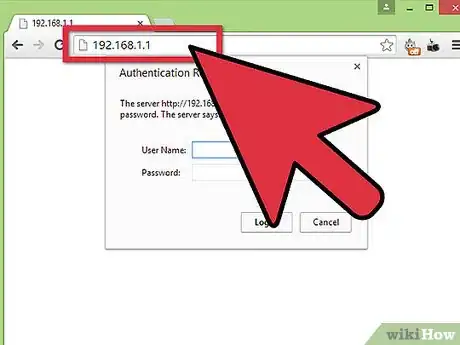
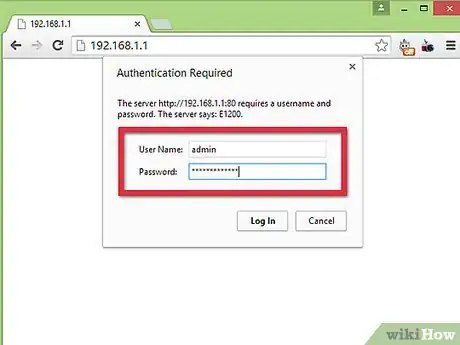

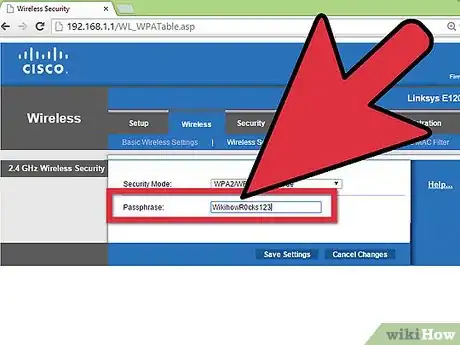
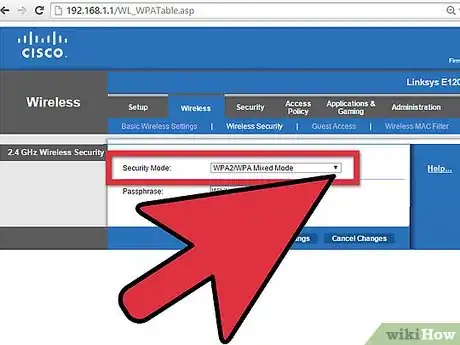
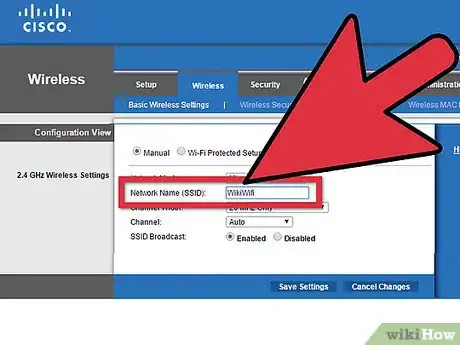

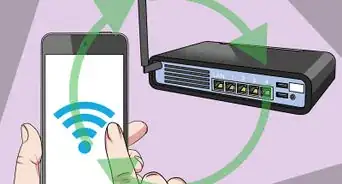

-Step-30.webp)
-Connection-Step-12-Version-5.webp)
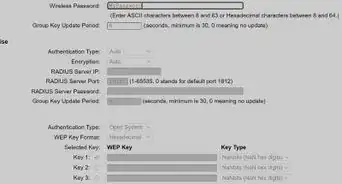
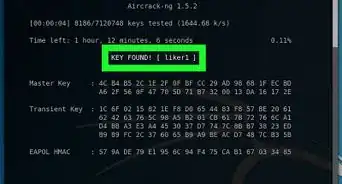
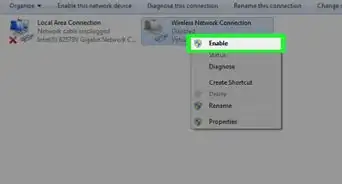



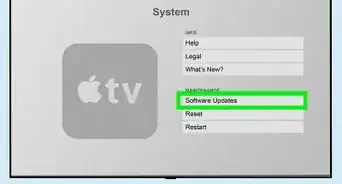
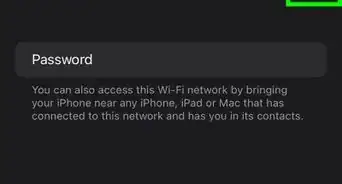
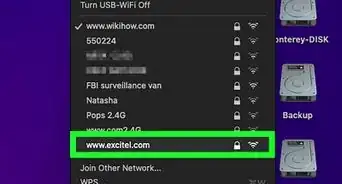
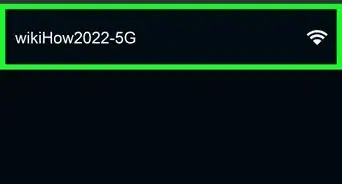










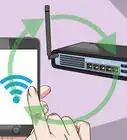
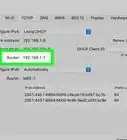
-Step-30.webp)
-Connection-Step-12-Version-5.webp)


































